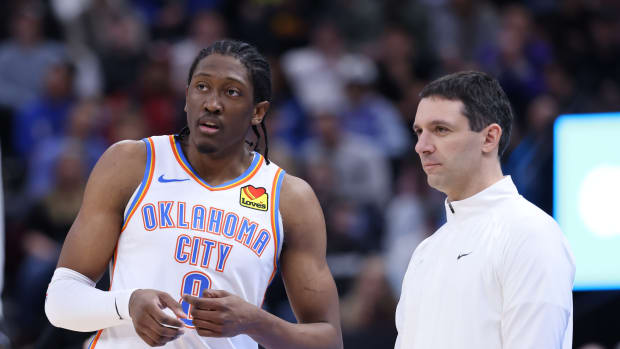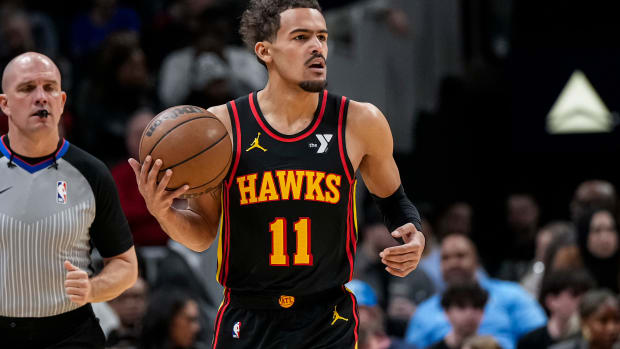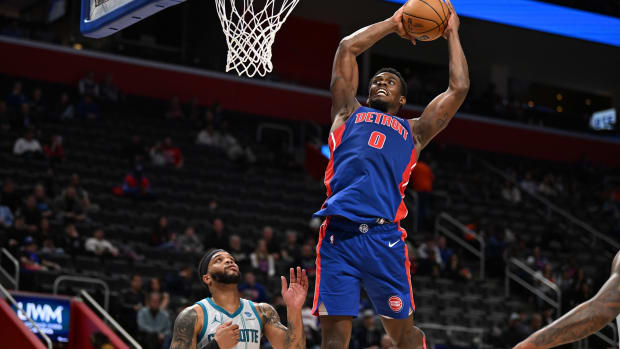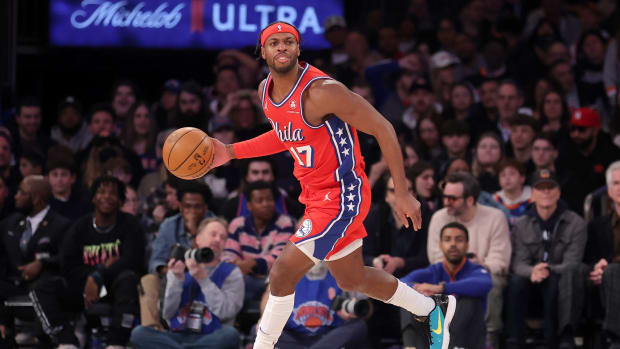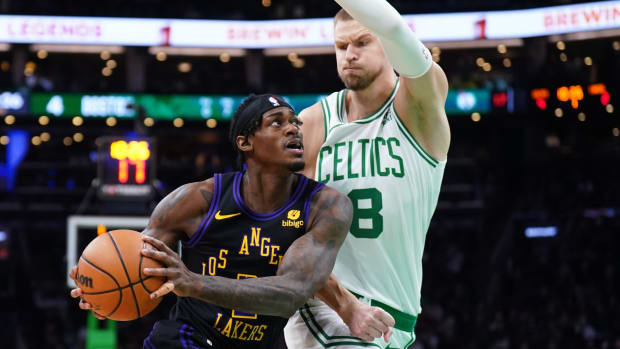Jabari Parker's Second ACL Tear Shakes Young Bucks To The Core
The great fear Wednesday night was Jabari Parker, a former No. 2 overall pick, had torn the ACL in his left knee for the second time in three seasons. When Bucks coach Jason Kidd confirmed that diagnosis Thursday, pegging Parker for a full year of rehabilitation, an even greater fear crystallized: Will Milwaukee’s flirtation with life as the NBA’s Next Big Thing end before it ever truly started?
That’s a dire question, but this is dire news, the type that can’t be sugarcoated. Parker, 21, was in the midst of a career year, settling into a comfortable life riding shotgun with Giannis Antetokounmpo and beginning to deliver on the hype that has followed him since high school. Thanks to career-highs across the board (20.1 PPG, 6.1 RPG, 2.8 APG, 19 Player Efficiency Rating), Parker worked his way to the outskirts of the All-Star snub conversation.
Four NBA Rebuilds About To Become Expensive
More importantly, he had worked his way back from his rookie-year injury, demonstrating key gains in his offensive output: Parker was shooting threes for the first time and connecting on a respectable percentage, he was savoring every open court opportunity and finishing fast breaks like a freight train, and he was consistently using his strong, wide frame to punish defenders and get to the stripe. While Antetokounmpo was busy dazzling the world with unprecedented feats of athleticism, Parker was getting busy developing into a more textbook all-around scoring threat: enough strength to overpower smaller defenders, enough quickness and handles to blow past bigger defenders, enough feel to know when to press his advantages, and enough motor to look like he was constantly running downhill in transition.
This season, Parker and Antetokounmpo had their thunder-and-lightning show really clicking for the first time, as the Bucks hold an above-average offensive rating for the first time since 2012. Until mid-January, they seemed destined for the playoffs and perhaps even a series victory. After more than a decade of mediocre basketball—and three years of stop-and-go excitement as Antetokounmpo found his superstar legs and Parker worked back from injury—Milwaukee seemed to be closing in on its day in the sun. A recent swoon, borne of defensive slippage and a road-heavy schedule, had dropped the Bucks from the East’s playoff picture, but help was on the way. Khris Middleton, perhaps the league’s most unheralded wing, made his season debut on Wednesday after missing Milwaukee’s first 50 games due to a hamstring injury. Before the Bucks’ Big 3 of Antetokounmpo, Parker and Middleton could log a single minute together, though, Parker was lost until Feb. 2018 when his left leg buckled on a drive to the hoop.
While Middleton’s return still looms large for Milwaukee’s playoff hopes, the balance of the season now becomes a salvage job rather than the possible coronation of a new NBA darling. Even if the Bucks do push back into the East’s top eight, Parker will be missing out on his first taste of the postseason, the Bucks won’t get a chance to see how their young core holds up together under the lights, and casual fans will miss out on the full force and fury of one of the league’s most potent up-and-coming duos. If Milwaukee misses out on the playoffs entirely, the sheer jubilation inspired by Antetokounmpo’s incredible breakthrough will be over way too soon. Did he really drain that step back at Madison Square Garden or was it a mirage?
The longer-term implications are suddenly bleak too. When Parker tore his ACL in 2014, SI.com noted that he had suddenly shifted from Milwaukee’s most reliable answer to its biggest question. Back then, the Bucks’ young core consisted of Antetokounmpo, Brandon Knight and Larry Sanders. In the time it took Parker to reclaim his positive trajectory, Antetokounmpo took off, Middleton emerged, Knight was traded to Phoenix, Sanders retired, Greg Monroe was signed, John Henson was re-signed, and Miles Plumlee was acquired, re-signed and then traded. Milwaukee kept going about its business, but it was mostly just biding its time for Parker’s return. Can an organization afford to do that twice, in such quick succession, and expect to build lasting, positive momentum? How many faces will come and go before 2018-19, the next season that Parker will begin fresh?
Once the shock of this injury wears off, the Bucks front office will need to begin pondering some terrible questions. What’s the plan if injuries prevent Parker from achieving the All-Star peak that seemed like a formality when he entered the league? Is there a hedge against the possibility that Parker winds up becoming a complementary player rather than a building block? Is it time to weigh acquisitions based on whether they make Antetokounmpo’s life easier rather than whether they fit with the desired core? Are the Bucks now more like the post-Kevin Durant Thunder—searching for an identity with Antetokounmpo in the Russell Westbrook solo star role—instead of the 2011 Thunder?
As bad as the timing is from Milwaukee’s team-building perspective, it’s even worse for Parker. Like SI.com detailed with Minnesota’s Zach LaVine, who tore his ACL last weekend, Parker’s injury comes just months before he was eligible to sign a rookie contract extension this offseason. While Parker’s offensive impact still vastly exceeds his defensive work, he was a strong candidate to receive a max or near-max extension like the one Milwaukee gave to Antetokounmpo last fall. Parker, as a clear franchise cornerstone in a small market and an All-Star in the making, was in line to sign a deal worth upwards of $110 million over four years.
The promising return of Jabari Parker
Now? He will very likely need to work his way back to the court next season and enter the 2018 offseason as a restricted free agent. Are nine-figure offers still going be there for a player with multiple ACL tears and only three or four months of game action to prove that he’s recovered from the second one? Maybe, but maybe not. Indeed, InStreetClothes.com notes that Michael Redd and Josh Howard are the only two players in recent NBA history to suffer multiple ACL tears. Redd was already past 30 when he tore his left ACL in back-to-back years and he never returned to form as a starter, much less a 20-PPG scorer. Howard was also past 30 when he suffered his second ACL tear, which effectively ended his career.
Parker enjoys the benefit of youth and the confidence that comes from successfully completing his rehabilitation program once, but he’s still heading towards unchartered waters. No matter how this plays out, he is virtually guaranteed to be the modern era’s most productive double-ACL player. Parker therefore stands as a trailblazer on a most unsettling road, coming out on the other side as an unprecedented comeback story or as another budding star prematurely, unfairly dimmed before he got the chance to shine.






























